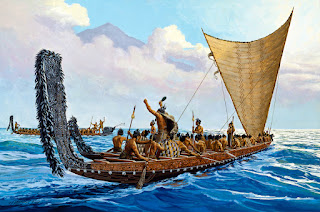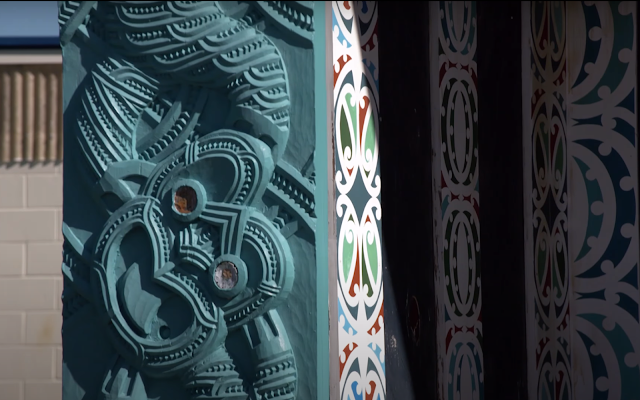Te Hiranga o ngā Waka Māori.
Hey everyone, good to be here talking about something that's really close to our hearts – the importance of Maori canoes. So, let's dive in and look at how these canoes have shaped our culture and our land.
You know, Maori legends are like a treasure trove of wisdom. Maui, the legendary demigod, he's at the center of some pretty incredible stories. Imagine him fishing up the North Island from the ocean – that's no small feat! And guess what? Canoes made all that possible. Just think about the audacity of that adventure without a trusty vessel to take on the waves.
Now, here's where it gets even cooler. The South Island isn't just a piece of land; it's linked to Maui's canoe. Seriously, it's like the remains of his canoe turned into this majestic place we call home. And when we think about it, that's a game-changer. Canoes aren't just boats; they're part of our identity, part of our landscape.
You might be wondering, "Why are canoes more important than people?" Well, just picture having a chat with the ground beneath your feet. It's as if the very land we stand on holds a narrative of its own, a story told through its shape – that of a canoe and a stingray. It's incredible to think that this land, in its very form, is advocating for us and our side of the debate. Maui's tale is etched into this very earth, and that's truly something extraordinary.
Now, let's tackle a counter-argument. Some might say, "No people, no canoes." Fair point, right? But hold up, there's another story to consider – Aoraki and his brothers. These celestial beings crashed their canoe before humans even existed. And guess what? They became the Southern Alps, those stunning peaks that grace our landscape. That story reminds us that canoes aren't just about us; they're woven into the fabric of this land.
So, wrapping it up, Maori canoes are more than vessels. They're threads that tie our past, present, and future together. The South Island isn't just ground we walk on; it's part of a bigger story. As we chat about the importance of these canoes, let's remember the tales, the myths, and the impact they've had on us all.
Thanks for being here, everyone. It's been a blast sharing these thoughts with you!
Māori version
Kia ora koutou katoa, he pai ki te noho nei i kōnei e kōrero ana mō tētahi mea e tino tata ana ki ō tātou ngākau – te hiranga o ngā waka Māori. Nō reira, karawhiua atu tātou kātahi ka titiro ki te mana o ēnei waka i ā tātou tikanga tuku iho me ō tātou whenua. Me mahi tahi tātou e ai ki te whakataukī, "He waka eke noa."
Ira tēnei, rite tonu ngā pūrākau a te Māori ki te putu taonga o te mōhiotanga hei ora pai. Ko Maui, he taha-atua rongonui, kei te pokapū o ētahi pūrākau tino mīharo rawa atu o Aotearoa. Pohewatia tāna hī ake i Te Ika-a-Māui mai i te moana. He autaia tonu tērā. Ā, whakaaro mai he aha? Ānei te hua a ngā waka hourua. Me whakaaro noa mō te māia o taua haerenga kāore he waka pono hei waka mā roto i ngā ngaru.
Nā, i kōnei ka tino pai ake. Ehara Te Waipounamu i te whenua noa; e hono ana te whenua ki te waka o Māui. Āe mārika, Te āhua nei ko ngā toenga o tōna waka kua panonitia ki tēnei wāhi whakahirahira e kīia nei ko te kāinga. Ā, ka whakaarohia e tātou, he huringa kēmu tērā. Ehara ngā waka hourua i te poti noa iho; he wāhanga o tō tātou tuakiri, he wāhanga o tō tātou whenua.
Kei te whakaaro pea koutou, "He hira ake te waka hourua i ngā tāngata?" Ā tēnā, pikitia noa koutou anō e kōrerorero ana ki te whenua i raro i ōu waewae. Te āhua nei ko te whenua e tū nei tātou e pupuri hoki ana i tāna ake kōrero, he kōrero i puta mai i tōna āhua – ko te waka me te whai repo. He mea whakamīharo te whakaaro ko tēnei whenua, ko tōna āhua hoki, kei te tohe mā tātou me tō tātou taha o te tautohetohe. Ko ngā pakiwaitara a Māui kua whakairo ki roto i tēnei whenua, he mea whakamiharo.
Nā, kia whakautungia tō koutou tohenga whakahē. Ka mea ētahi pea, "Karekau he tangata, karekau he waka." He patai pai, nē rā? Engari kia tau! e hoa mā, he pūrākau anō hei whakaaro – ko Aoraki me ōna tēina. I tukitukia e ēnei tāngata o te rangi tō rātou waka i mua i te tīmatanga a te oranga o te tāngata. Nā reira ka aha? Ka noho rātou hei Ngā Puke-māeroero, ko ngā tihi whakamiharo e whakapaipai ana i tō tātau horanuku. Ka whakamaumahara taua pūrākau, ehara i te mea mō tātou anake ngā waka; kua raranga rātou ki te papanga o tēnei whenua.
Nā, ānei āku kupu whakatepe, He hira atu te waka Māori i tētahi waka. He miro e hono ana i a tātou wā o mua, o nāianei, me te heke mai. Ko Te Waipounamu ehara i te whenua noa iho e hīkoi ana tātou; he wāhanga kē o te kōrero nui ake. I a tātou e kōrerorero ana mō te hiranga o ēnei waka, kia maumahara tātou ki ngā pūrākau, ngā pakiwaitara, me te kawekawe o aua waka ki runga i a tātou katoa.
Ngā mihi mō tā koutou noho ki kōnei, tēnā koutou katoa. He rawe te whakapuaki i ēnei whakaaro ki a koutou! Nō reira, ka waihotia ki kōnei.
Grammar Lesson



Comments
Post a Comment